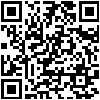外教一对一课程领取私人定制英语学习方法
相关帖子
最新文章
- 【职场英语】邮件写不好?小心客户已读不回!
- 【外贸老司机の秘籍】这些商务英语暗号不懂?客户分分钟和你“断联”!
- 【5分钟搞定】职场人必收的5个高频商务英语表达!
- 3个让外教惊艳的英语表达技巧,让你秒变“口语刺客”!(附“社牛”秘籍)
- 这些职场面试经典英文回答,献给毕业的你!让毕业生轻松完胜资深员工!
- 2025能带来好运的英文微信昵称(140个),墙裂马住!!
- 【急】2025最新线上一对一英语外教哪个好?一节课多少钱?
- 【求问】有没有报过班的说一下成人学习英语选择哪个机构?
- 好想找个靠谱一点的成人英语网课,大家有什么推荐吗?
- 【在线等!急!】学好英语口语一定要报班吗?英语口语培训班哪家好?
- 成人英语口语要怎么学? 有什么好方法吗?
- 成人英语口语怎么学比较好?怎么学效果好?
- 成人一对一英语外教课有没有必要?性价比高吗?
- 深圳有没有适合上班族学英语口语的机构?有推荐吗?
- 有没有靠谱的线上英语外教?有推荐吗?
英语语法:如何辨别和理解英语时态?有哪些小窍门?
英语时态
英语的时态是靠动词的变化和时间状语来表达的。英语中的时态共有十六种,但是常考的或较常用的只有8种,而且重点测试完成时态。 要掌握英语的时态和语态,必须掌握好英语中的助动词(do, be, have)和时间状语这两个核心问题。
1、一般现在时
主要用来表示人、事物的现在状况和特点;表示经常或习惯性的动作,句子中常有often, always, from time to time 等时间状语; 表示客观规律和永恒真理等。
He usually goes to work at 7 o’clock every morning.
She has a brother who lives in New York.
The earth goes around the sun.
Guangzhou is situated in the south of China.
2、现在进行时
表说话时或目前一段时间内正在进行的活动:或表感情色彩,加强语气。与频率副词,如always,constantly,continually,again等连用表示说话人的某种感情色彩(赞叹、厌烦、埋怨等)。
We are having English class.
The house is being built these days.
The little boy is always making trouble.
1、一般疑问句是将be移到主语前面,句末加问号,读升调。
be+主语+doing sth
◇Are they putting up the scaffolding? Yes, they are. / No, they aren't.
◇Is he showing a foreign guest round the city? Yes, he is. / No, he isn't.
2、否定句式是在be动词后加not。
主语+be+not+doing sth
◇I am not working.
◇He isn't runnig or the track.
◇The students aren't playing football.
3、现在完成时
表动作发生在过去,完成在过去,但强调与现在情况仍有联系,其结果或影响仍存在。
现在完成时表示过去发生的动作对现在造成的影响或结果或表示过去的动作或状态持续到现在。它的构成是:主语+have/has +动词的过去分词。
基本结构:主语+have/has+动词的过去分词(p.p)
现在完成时用法
①肯定句:主语+have/has+动词的过去分词(p.p)(V-ed)+宾语(或者其他).
②否定句:主语+have not/has not+动词的过去分词(p.p)(V-ed)+宾语.
③一般疑问句:Have/Has+主语+动词的过去分词(p.p)(V-ed)+宾语(或者其他)?
肯定回答:Yes,I have.或Yes,she/he/人名 has.
否定回答:No,I haven't.或No,she/he/人名 hasn't.
④特殊疑问句:特殊疑问词+一般疑问句(have/has+主语+过去分词+其他)
⑤被动时态:
现在完成时的被动语态的肯定式为:have/ has +been +done。如:
The experiment has been done successfully. 这个实验做得很成功。
现在完成时的被动语态的否定式为:have/ has +not +been +done。如:
Tom's novel has not been published. 汤姆的小说还没有被出版。
现在完成时的被动语态的一般疑问句需将have /has提到主语的前面。如:
Has his bike been repaired? 他的自行车修好了吗?
现在完成时的被动语态的特殊疑问句为:疑问词+have /has +been +done? 如:
Who has been invited? 谁受到了邀请?
4.一般过去时
一般过去时表示过去某个时间里发生的动作或状态、过去习惯性、经常性的动作、行为、过去主语所具备的能力和性格。
基本结构:主语+谓语(动词过去式)+句子其他成分;主语+was/were+形容词/名词/介词短语+过去时间;否定形式①was/were+not;②在行为动词前加didn't,同时还原行为动词;一般疑问句Did+主语+do+其他。
一般过去时,表示过去某个时间里发生的非持续性动作或存在的状态,也表示经常或反复发生的动作。用动词的过去式表示,常和表示过去的时间状语连用,如:yesterday,last night,in+过去的年份,two days ago,before,the age of等。
一般过去时也表示过去经常或反复发生的动作,常和often,always等表示频率的时间状语连用。表示过去习惯性、经常性的动作、行为;过去主语所具备的能力和性格。
5.过去进行时
表示过去某个时间点或某段时间内正在发生的动作。
The boy was doing his homework when his father came back from work.
He was taking a walk leisurely by the lake when he heard someone shouted for help.
What were you doing at nine last night?
The radio was being repaired when you called me.
6. 过去完成时
表示过去某个时间之前已经完成的动作,即过去完成时的动作发生在“过去的过去”,句中有明显的参照动作或时间状语,这种时态从来不孤立使用 ( before, after, by, up till )
There had been 25 parks in our city up till 2000.
By the end of last term we had finished the book.
They finished earlier than we had expected.
7. 一般将来时
表在将来某个时间会发生的动作或情况。常和tomorrow, next year, in 2008等表示将来的时间状语连用,其表现形式多达5种。
Beijing will host the 29th Olympic Games in 2008.
8、将来进行时
表将来某个时间正在发生的动作,或按计划一定会发生的事情。
I’ll be doing my homework this time tomorrow. 明天这会我正在写作业。
The President will be meeting the foreign delegation at the airport.
9、将来完成时
表在将来某时刻之前业已完成的事情,时间状语非常明显。
常用的时间状语一般用by+将来的时间。如:by the end of this year, by 8 o’clock this evening, by March next year以及由by the time…, before或when等引导的副词从句。
By the end of next month, he will have traveled 1000 miles on foot.

